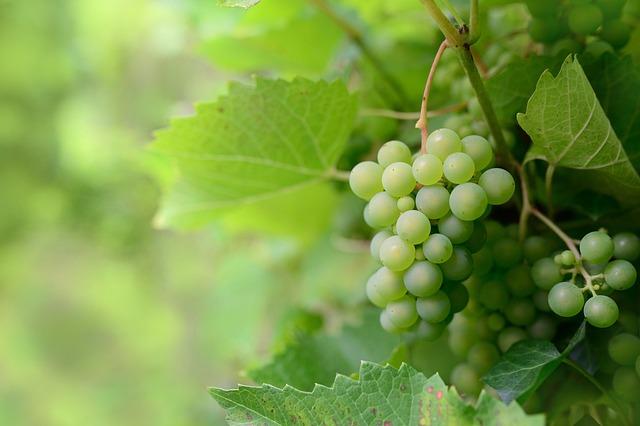When it comes to sharing a bite with our beloved canine companions, many pet owners find themselves wondering about the safety and benefits of various human foods. Among the most common queries is whether dogs can safely enjoy fruits as part of their diet. While dogs are primarily carnivorous, fruits can offer a delightful array of vitamins, minerals, and antioxidants that may contribute to their overall well-being. However, not all fruits are created equal when it comes to our furry friends. In this article, we will explore which fruits can be safely incorporated into your dog’s diet, the potential health benefits they offer, and important precautions to ensure your pet’s safety and happiness. Whether you’re looking to enhance your dog’s nutrition or simply want to share a healthy snack, understanding the do’s and don’ts of feeding fruits to dogs is essential for every responsible pet owner.
Understanding Which Fruits Are Safe for Your Canine Friend
Fruits can be a delightful addition to your dog’s diet, offering a range of vitamins and minerals. However, not all fruits are created equal when it comes to canine consumption. Here’s a list of fruits that are safe for dogs and some to avoid:
- Safe Fruits:
- Apples: Rich in fiber and vitamin A, but be sure to remove the seeds and core.
- Blueberries: Packed with antioxidants, these tiny berries are great as a low-calorie treat.
- Watermelon: Hydrating and refreshing, just make sure to remove the seeds and rind.
- Fruits to Avoid:
- Grapes and Raisins: Known to be toxic to dogs and can cause kidney failure.
- Cherries: The pits, stems, and leaves contain cyanide, which is harmful to dogs.
- Avocado: Contains persin, which can cause vomiting and diarrhea in dogs.
Always introduce new fruits in moderation and observe your dog’s reaction. If you have any doubts, it’s best to consult with your veterinarian before adding new items to your pet’s diet. Remember, each dog is unique, and what works for one might not be suitable for another.

Nutritional Benefits and Potential Risks of Fruits for Dogs
Fruits can be a delightful addition to your dog’s diet, offering a variety of nutritional benefits. Many fruits are rich in vitamins, minerals, and antioxidants, which can contribute to your dog’s overall health. For instance, apples provide a good source of vitamin C and fiber, while blueberries are packed with antioxidants that can support cognitive function and heart health. Bananas offer potassium and biotin, aiding in muscle function and skin health. When offering fruits to your furry friend, it’s crucial to remember moderation is key, as too much fruit can lead to digestive upset.
While fruits can be beneficial, it’s important to be aware of potential risks. Some fruits, like grapes and raisins, are toxic to dogs and should be avoided at all costs. Others, such as cherries and avocados, contain parts that can be harmful if ingested. Always ensure fruits are washed, peeled, and free from seeds or pits before serving. Here’s a quick checklist to keep your dog safe:
- Wash thoroughly: Remove any pesticides or chemicals.
- Peel and core: Remove seeds, pits, and stems.
- Moderation is key: Treat fruits as occasional snacks, not meal replacements.
How to Introduce Fruits into Your Dogs Diet Safely
Introducing fruits into your dog’s diet can be a delightful way to enhance their nutrition, but it’s crucial to do so with care. Start by selecting fruits that are safe for dogs, such as apples, blueberries, and watermelon. These fruits are not only tasty but also packed with essential vitamins and antioxidants. Avoid toxic fruits like grapes and cherries, as they can be harmful to your furry friend. When serving fruits, ensure they are washed thoroughly and cut into bite-sized pieces to prevent choking hazards. Remember, moderation is key; fruits should be an occasional treat rather than a staple in their diet.
- Introduce slowly: Begin with small portions to monitor how your dog reacts to new fruits.
- Observe for allergies: Keep an eye out for any signs of allergic reactions such as itching or digestive upset.
- Consult your vet: Before making any significant changes to your dog’s diet, it’s always wise to seek advice from your veterinarian.
Incorporating fruits safely can add variety to your dog’s meals and support their overall well-being. With these tips, you can confidently expand your dog’s palate and enjoy watching them relish these natural treats.

Recommended Fruit Portions and Serving Ideas for Dogs
When it comes to incorporating fruits into your dog’s diet, moderation and preparation are key. Portion control is crucial, as even dog-friendly fruits contain natural sugars that should be limited. Generally, fruits should make up no more than 10% of your dog’s daily caloric intake. For smaller breeds, a couple of small bites of fruit per day can be sufficient, while larger breeds might enjoy a few more. Always introduce new fruits gradually and in small amounts to monitor for any adverse reactions.
Here are some serving ideas to make fruit a delightful treat for your furry friend:
- Frozen Berry Cubes: Blend berries with water and freeze them in ice cube trays for a refreshing snack.
- Apple Slices: Remove the seeds and core, then slice into bite-sized pieces. A sprinkle of cinnamon can add a tasty twist.
- Banana Chunks: Cut bananas into small pieces or mash them and mix with your dog’s regular food for a sweet addition.
- Watermelon Pops: Seedless watermelon chunks can be served fresh or frozen for a hydrating treat.
Ensure any fruit given is thoroughly washed and prepared correctly to avoid any potential hazards, such as seeds or pits, which can be harmful to dogs. A little creativity can turn these simple snacks into a healthy highlight of your dog’s day!

